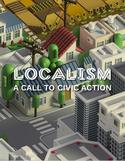If you ask an American to tell you about their country, they’ll probably paint a bleak picture. Civic bonds are fraying. Division and tribalism dominate the news. The public is losing faith in democracy as the most effective way to govern. At a time of rapid demographic and cultural change, with frustration over economic inequality reaching a boiling point, our national politics has not found a way to generate consensus. read more »
Demographics
Localism: A Call to Civic Action
- Login to post comments
How Vital Is Transit to Your Region?
Transit ridership is plummeting almost everywhere, yet officials in many cities are still devising hugely expensive plans for transit projects. One such city is Austin, whose leaders are talking about spending between $6 billion and $10.5 billion on new transit lines (and the final cost always ends up being more than the projections). read more »
- Login to post comments
Bremerton, Washington: Challenges of an Industrial Town
Recent statistics from Indeed.com show that Washington, DC, the winner of the HQ2 contest, ranks second only to San Jose in the percentage of high-tech job listings. This tells us that most of the 238 cities that submitted bids --- despite assurance from Amazon --- were never seriously in the running. If mid-sized places like Indianapolis did not really stand a chance, however, what does that tell us about the economic prospects for smaller, more industrial places that have virtually no software companies? read more »
- Login to post comments
The New Shame of Our Cities
A metropolitan economy, if it is working well, is constantly transforming many poor people into middle-class people, many illiterates into skilled people, many greenhorns into competent citizens. . . . Cities don’t lure the middle class. They create it.
—Jane Jacobs read more »
- Login to post comments
The Plight of the Midsized Midwest Industrial City
Bloomberg’s Justin Fox tweeted out a link to this piece from a professor in Peoria, Illinois who left a coveted tenure-track position because he couldn’t bear the thought of living there. Here’s an excerpt: read more »
- Login to post comments
Trouble for the Bubble Down Under
In a remarkable and most unexpected outcome, Australia’s conservative Prime Minister Scott Morrison has retained the country’s leadership at the recent Australian Federal Parliamentary election (18 May, 2019). Morrison’s victory confounded a wide array of commentators, academics, advocacy groups, industry groups, all of the opinion polls, most of the media and a host of fringe political groups who not only predicted victory for the Labor opposition but an emphatic one. read more »
- Login to post comments
America Can’t Ignore The Economic Threat Of A Rising China
In the aftermath of the Communist victory in the late 1940s, the question often asked in Washington was: “Who lost China?” That fueled the McCarthyite inquisition that followed. The question our children might ask is: “Who lost America?” read more »
- Login to post comments
Europe’s Overlooked Suburbs: Key to EU Election?
In the run-up to the elections for the European Parliament, The Economist magazine suggests that the old political divisions no longer apply (“Between somewhere and anywhere: The politics of suburbia in Europe,” May 11, 2019). As the chaos of a British Parliament is unable to meet its self-defined Brexit deadline, The Economist observes that “Culture wars have taken hold of European politics and eclipsed the old left-versus-right distinction,” suggesting that the traditional majority social democrats and Christian democrats could find themselves outnumbered after the election: read more »
- Login to post comments
Mayoral Mismatch
Mayors have had little success in becoming president, with only one big-city chief executive, Grover Cleveland of Buffalo, later governor of New York, actually making it to the White House. read more »
- Login to post comments
Densification Efforts Like SB50 Are The Wrong Fix To California’s Housing Problem
For decades California’s regulatory and tax policies have undermined our middle class, driving millions out of this most favored state. Perhaps nowhere is this clearer than in a drive that seeks to destroy the single-family neighborhoods preferred by the state’s middle-income households. read more »
- Login to post comments





















